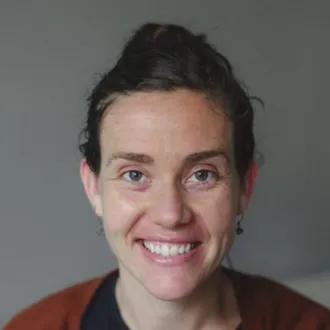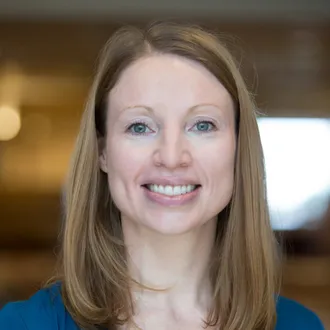The Potential of Women’s Councils in Medicine

Full disclosure: we are writing this blog from our beds, on our phones via Google Docs, with babies nearby. This is how work sometimes gets done as working moms.
Women's Councils and Why We Started One
In 2019, in its inaugural year, the Division of Palliative Medicine at the University of California San Francisco began the process of establishing an interprofessional Women's Council—a group of palliative care clinicians and administrative staff, who identify as women, to bring their successes, concerns, reflections, and questions in need of the hive mind. The council meets regularly for support, mentorship, and consideration of ways to improve gender equity, and the overall work experience and sustainability for all members.
The council meets regularly for support, mentorship, and consideration of ways to improve gender equity, and the overall work experience and sustainability for all members.
Learning from other divisions within our department, we sought to create a safe and supportive space to bring successes, concerns, reflections, and questions in need of the hive mind. We knew this women's council needed to be co-led interprofessionally, and thus have co-steered the helm as social worker and physician. Creating a regular, reliable container for connection and support has been our north star from the beginning.
Physicians increasingly identify as women. In palliative care, where we weave together spiritual care, social work, nursing, and medicine, the workforce is overwhelmingly composed of women, many of whom have young children. These clinicians frequently find themselves in the sandwich generation caring for children and/or aging parents, a weight compounded infinitely by the pandemic. Simultaneously, leadership positions are still disproportionately given to cisgender men. As such, the need for peer support, validation, and collective advocacy remains central to growing a predominantly woman-powered workforce, which can sustain years of emotionally intense clinical practice and scholarly endeavors—while also navigating the emotional and spiritual challenges of daily life.
The need for peer support, validation, and collective advocacy remain central to growing a predominantly woman-powered workforce.
How Our Women's Council Works
Monthly meetings at our women’s council typically include a prompt and a facilitated conversation, often from a shared reading. (Prior examples have included “How About Never” from The Atlantic about the challenges of saying no, which resonated with many of the women in our group, and another about a “canceled whistle-blower” and the consequences of speaking up as a woman.)
Part reflection and check-in, part strategy and brainstorming, the monthly meetings have become a communal safe space.
Part reflection and check-in, part strategy and brainstorming, the monthly meetings have become a communal safe space. We have occasionally invited faculty from within the university to expand our knowledge and skills related to career development, with sessions on conflict management and how to craft a personal mission statement. Explicit advocacy and action items have surfaced, including a protocol for returning to work after parental or other family leave, and more opportunities for mentorship for women from all clinical disciplines.
As our group continued to meld, staying open and welcoming new members, it became clear that hosting events that included the entire division would help to educate and shift our collective culture—also promoting mentorship and allyship within our division and beyond. With prompting and support from our division chief, we established the Visiting Professorship for Exceptional Women Leaders in Palliative Care. Through this program, several times a year we invite women pioneers in the field to join us (virtually or in person). This promotes education by national leaders, highlighting and celebrating the careers of women and their essential and foundational impact on the field of palliative care. This series has also helped address mentorship gaps, with dedicated time for one-on-one or small-group mentoring sessions for division members and invited speakers. Guest speakers have included Christine Cassell, MD, Betty Ferrell RN, PhD, Diane Meier, MD, Barbara Jones, LCSW, PhD, and Patricia Davidson, PhD, MEd, RN.
This [series] promotes education by national leaders, highlighting and celebrating the careers of women and their essential and foundational impact on the field of palliative care.
In the coming years, if/when regular socializing in person returns to our routines, we hope to expand our connections and learning opportunities to include those from other divisions with clinical work that overlaps with palliative care (e.g., oncology, pulmonology, etc.). We look forward to sharing physical and emotional space with our current members in a way that may further facilitate our ability to feel seen and supported by our peers. For now, we continue to feel grateful for the collective wisdom and sanctuary of our incredible group of women colleagues.
Implementing a Women’s Council at Your Organization
If you are interested in starting a women’s council at your institution, we recommend the following tips, which have been helpful in our journey thus far:
Supportive Stakeholders
Having support from leadership is helpful. This might include funding for the time it takes to start and lead the group, and openness to listening to—and potentially acting upon—issues and suggestions that arise from group discussions.
Shared Direction
Asking participants about their hopes and goals at the start can also help steer the group toward particular topics, collaborations, etc., which feel relevant and add value.
Dedicated Time and Space
We’ve made it a goal to hold meetings at regular times for consistency, and to create a routine. We recognize that no time will likely work for everyone, but we do our best.
Shared Interprofessional Leadership
We have found that interprofessional leadership helps to make the group feel open, welcome, and relevant for all—no matter what discipline. This holds true for our members, the guests we consider inviting, and just about everything else!

Be the first to read articles from the field (and beyond), access new resources, and register for upcoming events.
SubscribeEdited by Melissa Baron. Clinical review by Andrew Esch, MD, MBA.

